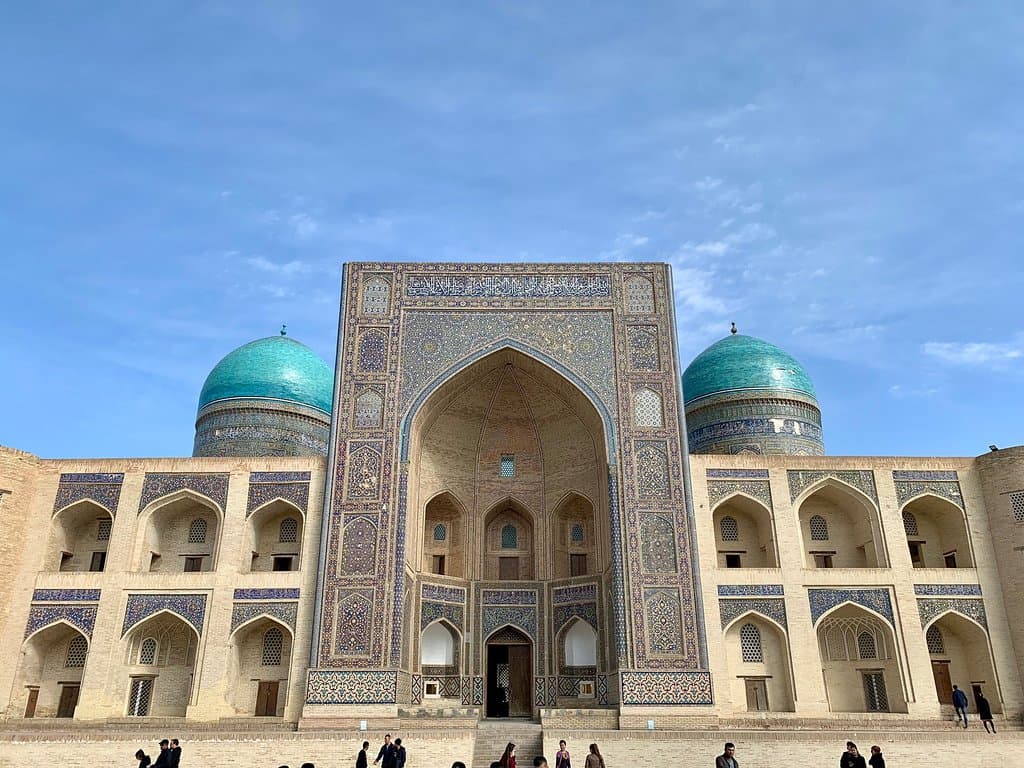
Mir-i Arab Madrasa
A historic Quranic school in Bukhara, renowned for its stunning blue domes and continuous operation for nearly 500 years.
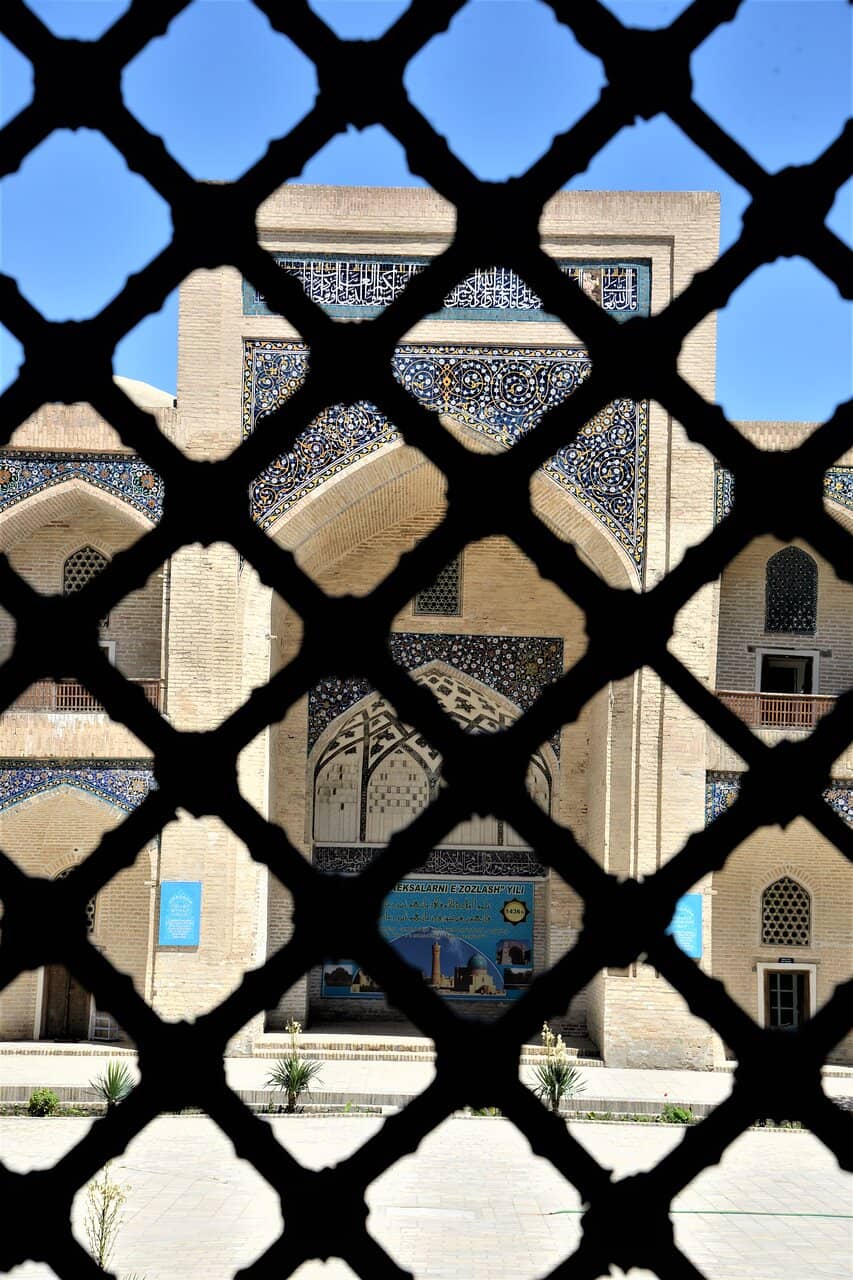
Highlights
Must-see attractions

Social
From TikTok & Reddit
Best Time
Fewer crowds, soft light

Mir-i Arab Madrasa
Best Time
Fewer crowds, soft light

Highlights
Must-see attractions
A historic Quranic school in Bukhara, renowned for its stunning blue domes and continuous operation for nearly 500 years.
"Majestic! One of the buildings of the Po-i-Kolon complex, a living legacy of Islamic education."
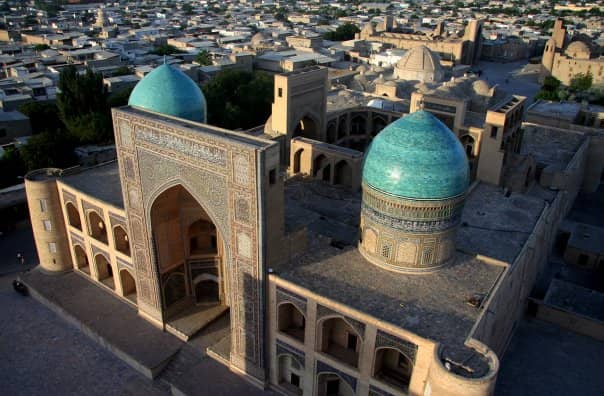
Modest Dress Required
Cover shoulders & knees. Women may need headscarves. Respect this active religious site. :pray:
Photography Opportunities
Capture the sunset glow on the facade with the Kalyan Minaret in the background. :camerawithflash:
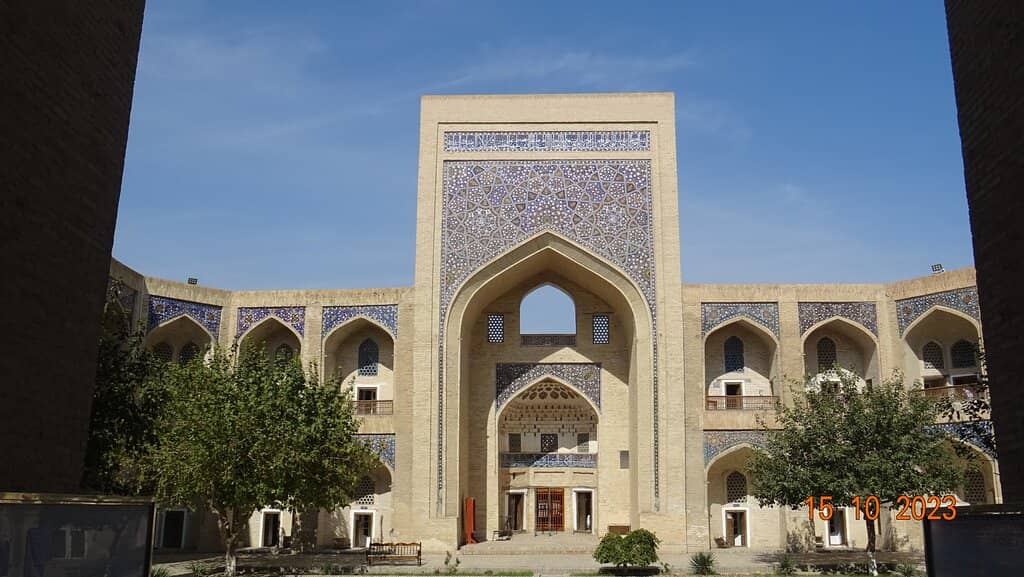
Highlights
Discover the most iconic attractions and experiences
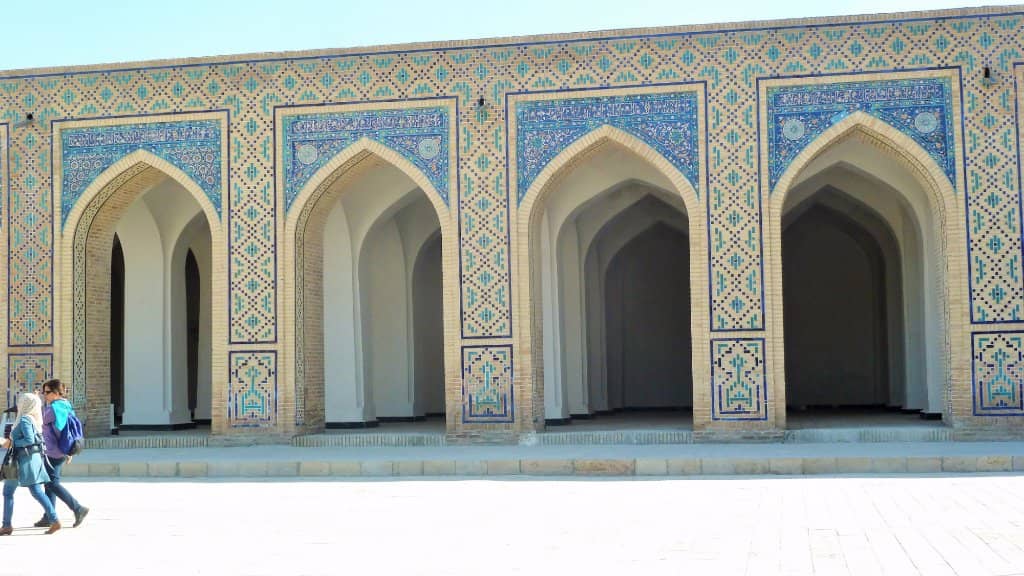
Intricate Blue Domes
Exterior and interior
Marvel at the stunning turquoise-tiled domes, a signature of Islamic architecture, shimmering in the Uzbek sun.
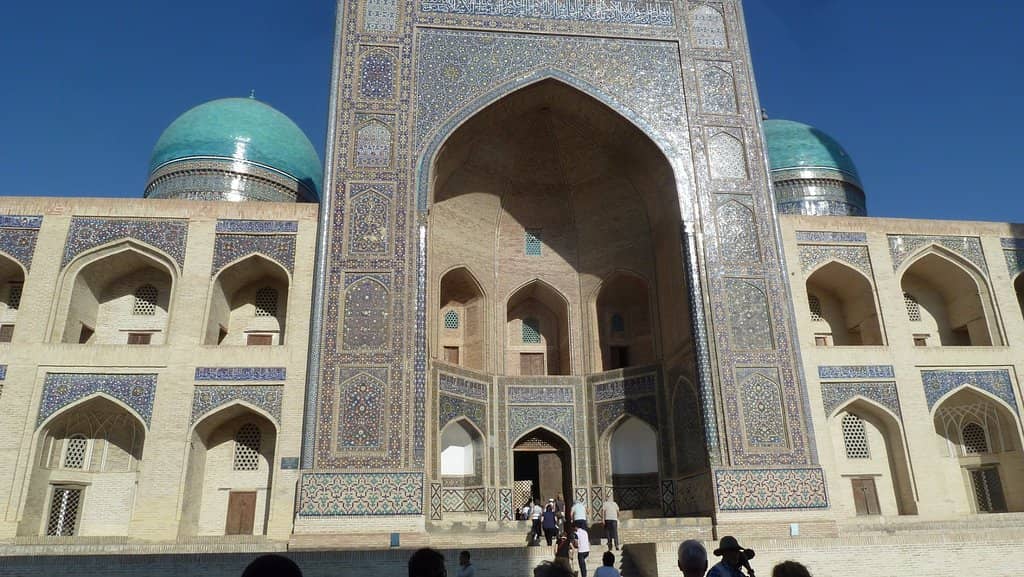
Vast Courtyard
Central courtyard
Experience the grandeur of the central courtyard, once bustling with students, now a peaceful space for reflection.
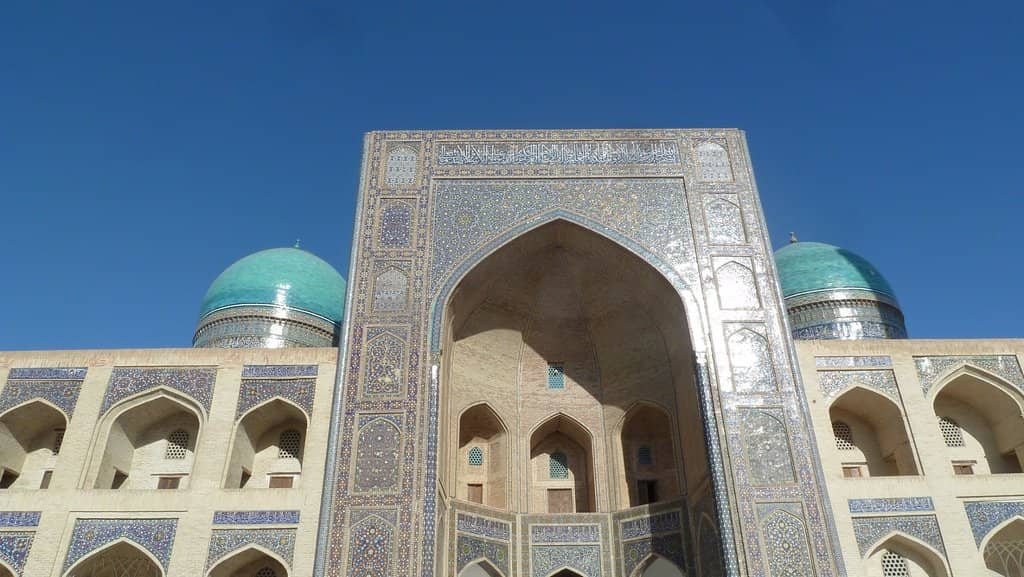
Calligraphy and Mosaic Work
Facade and interior details
Admire the detailed calligraphy and geometric mosaic patterns that adorn the madrasa's walls, showcasing exquisite craftsmanship.
Plans like a pro.
Thinks like you
Planning Your Visit
Respectful Attire is Key
Timing Your Visit for Tranquility
Best Times
Insider Tips
from TikTok, Instagram & Reddit
Modest Dress Required
Cover shoulders & knees. Women may need headscarves. Respect this active religious site. :pray:
Photography Opportunities
Capture the sunset glow on the facade with the Kalyan Minaret in the background. :camerawithflash:
Observe from Lobby
Guests can't enter school areas but can view the lobby. :eyes:
Part of a Larger Complex
Mir-i-Arab is within the Po-i-Kalyan complex, explore it all! :world_map:
Tips
from all over the internet
Modest Dress Required
Cover shoulders & knees. Women may need headscarves. Respect this active religious site. :pray:
Photography Opportunities
Capture the sunset glow on the facade with the Kalyan Minaret in the background. :camerawithflash:
Observe from Lobby
Guests can't enter school areas but can view the lobby. :eyes:
Part of a Larger Complex
Mir-i-Arab is within the Po-i-Kalyan complex, explore it all! :world_map:
Evening Ambiance
Visit in the evening; it's a popular spot for locals and tourists. :city_sunset:
What Travellers Say
Reviews Summary
Visitors consistently praise the Mir-i-Arab Madrasa for its stunning architectural beauty, particularly its intricate blue tilework and grand domes. Its historical significance as a continuously operating Islamic school for centuries is a major draw, offering a glimpse into living religious heritage. While access inside is limited, the exterior and courtyard provide ample opportunity for appreciation and photography.
"Majestic! One of the buildings of the Po-i-Kolon complex is the Sheikh Mir-i-Arab Madrasa, the Quranic school built between 1530 and 1536 by Ubaydullah Khan in honor of his Sufi teacher Abdullah al-Yemeni. Since the nickname of this Sufi scholar was Sheikh Mir-i-Arab, the "Prince of the Arabs", the madrasa was given this name. How the construction of the school was financed is a less pretty story: Ubaydullah Khan sold 3,000 Shiite Bukharans into slavery to raise money! With a brief interruption from 1920 to 1946, the Quranic school has been in operation since its opening in 1536 and has produced several high officials (grand muftis). Since 2018, the madrasa has had the status of a university."
Koen
"🕌 Mir-i-Arab Madrasa – A Living Legacy of Islamic Education in Bukhara
📍 Location: Opposite Kalyan Mosque, Po-i-Kalyan Complex, Bukhara, Uzbekistan
📅 Built: Circa 1535–1536
🔨 Commissioned by: Sheikh Abdullah Yamani of Yemen (Mir-i-Arab), financed by Ubaydullah Khan of the Shaybanid Dynasty
✨ Overview:
The Mir-i-Arab Madrasa is one of Central Asia’s most revered Islamic institutions, renowned for its architectural grandeur, historical significance, and continuous use as a religious school for nearly 500 years.
🌟 Key Highlights:
Architectural Masterpiece
This iconic madrasa showcases stunning blue-tiled domes, intricate mosaic work, and a symmetrical facade typical of Timurid and Shaybanid-era design. The central portal is adorned with majestic calligraphy and glazed ceramic art.
A Symbol of Revival
Built during the rule of Ubaydullah Khan, the madrasa marked a cultural and religious renaissance in Bukhara following the Mongol invasions. It was established to promote Islamic learning and Sufism.
Still Active Today
Mir-i-Arab remains a functioning madrasa, training young men in Islamic theology, Arabic, and Qur’anic studies. It was one of the few Islamic institutions allowed to operate during the Soviet era, making it a symbol of religious resilience.
Name Origin
“Mir-i-Arab” means “Prince of the Arabs”, referring to Sheikh Abdullah Yamani, a revered Yemeni scholar who became spiritual advisor to Ubaydullah Khan and is buried in the madrasa.
🧭 What You’ll See:
The two blue domes: one crowns the prayer hall, the other the burial chamber of Mir-i-Arab and Ubaydullah Khan.
A vast central courtyard surrounded by two stories of hujras (student rooms).
Beautiful mosaic tilework depicting floral and geometric patterns.
📷 Photography Tip:
Capture the sunset glow on the madrasa’s façade while standing in Registan Square of Bukhara, with the Kalyan Minaret and Mosque in the background for a complete ensemble view."
Saurav Debnath
"A beautiful Madrasa in the heart of Burkhara, it's a great place to stop by and get some rest while doing people watching. I highly recommend visiting in the evening as it's a popular gathering place for tourists and locals"
Elwis Kurzątkowski
What People Like
What People Dislike
Frequently Asked Questions
🚇 🗺️ Getting There
Mir-i-Arab Madrasa is located in the heart of Bukhara's historic center, within the Po-i-Kalyan complex. It's easily accessible on foot from most central hotels. Taxis are readily available for longer distances. :taxi:
Yes, the Mir-i-Arab Madrasa is a key component of the magnificent Po-i-Kalyan complex, which also includes the Kalyan Minaret and the Kalyan Mosque. Exploring the entire complex is highly recommended. :world_map:
Wander through the vast square, taking in the scale of the minaret, mosque, and madrasa. Many visitors find walking to be the most immersive way to experience the historical significance of the area. :athletic_shoe:
🎫 🎫 Tickets & Entry
Entry to the courtyard and exterior of Mir-i-Arab Madrasa is generally free as part of the Po-i-Kalyan complex. However, access to the interior student areas is restricted. :ticket:
As a functioning madrasa, specific visitor hours can vary. It's best to visit during daylight hours. The Po-i-Kalyan complex itself is generally accessible throughout the day. :clock1:
Visitors can typically view the lobby area, but access to the actual school rooms (hujras) where students study is restricted to maintain the sanctity and function of the institution. :door:
While the madrasa itself may not have a separate entrance fee for its exterior, there might be fees for visiting other parts of the complex or for guided tours. It's advisable to check locally for the most current information. :moneywithwings:
Modest dress is strictly required. Visitors should cover their shoulders and knees. Women are advised to cover their heads. This is a place of active religious education. :scarf:
📸 📸 Photography
The courtyard offers great perspectives of the facade. For iconic shots, frame the madrasa with the Kalyan Minaret and Mosque in the background, especially during the golden hour. :camerawithflash:
Photography is generally permitted in the public areas like the courtyard. However, always be respectful and avoid photographing students or during prayer times. :iphone:
Early morning or late afternoon provides the best light for photography, minimizing harsh shadows and capturing the beautiful tilework. Sunset offers a particularly magical glow. :sunriseovermountains:
🎫 🕌 Onsite Experience
Built in the 16th century, Mir-i-Arab is one of Central Asia's most revered Islamic institutions, continuously operating as a Quranic school for nearly 500 years, even through the Soviet era. :scroll:
You can see the vast central courtyard, student rooms (hujras), and admire the intricate mosaic tilework and calligraphy on the facade. The two blue domes are a prominent feature. :eyes:
Yes, it remains an active madrasa, training young men in Islamic theology and studies. It's a living legacy of Islamic education in Bukhara. :mortar_board:
'Mir-i-Arab' translates to 'Prince of the Arabs,' referring to Sheikh Abdullah Yamani of Yemen, a revered scholar buried within the madrasa. :crown:
While not always formally advertised, local guides are often available in the Po-i-Kalyan complex who can provide in-depth historical and cultural context for the madrasa and surrounding sites. :guide_dog:
For Different Travelers
Tailored advice for your travel style
👨👩👧 Families with Kids
Keep explanations simple and engaging, highlighting the historical aspect. Ensure children understand the need for quiet and modest dress to respect the functioning religious site. Visiting the broader Po-i-Kalyan complex, which includes the open square, might be more engaging for younger children. :family_mm:
🕌 Muslim Travelers
Consider visiting during prayer times to observe the spiritual atmosphere from a respectful distance, or explore the surrounding Po-i-Kalyan complex which is a hub of Islamic heritage. The madrasa's history of resilience, particularly its operation during the Soviet era, makes it a symbol of enduring faith. :mosque:
📸 Photographers
Aim for the golden hours of sunrise and sunset for the most dramatic lighting. The late afternoon sun casts a warm glow on the facade, creating stunning contrasts. Experiment with different angles from the vast square to capture the scale and detail. Remember to be mindful of visitors and students, and avoid intrusive photography.
Deep Dives
In-depth insights and expert knowledge
Architectural Marvel of the 16th Century
The madrasa's construction was commissioned by Ubaydullah Khan, financed by the sale of thousands of Shiite Bukharans into slavery, a stark reminder of the complex historical context. Despite this dark origin, the madrasa was intended to foster Islamic learning and Sufism, marking a cultural and religious revival in Bukhara after the Mongol invasions.
Today, the Mir-i-Arab Madrasa stands not just as a historical monument but as a living institution. It has continuously operated as a Quranic school for nearly five centuries, even during the Soviet era when many religious institutions were suppressed. This resilience makes it a powerful symbol of religious continuity and a vital center for Islamic education in Central Asia.
A Living Legacy of Islamic Education
During the Soviet era, Mir-i-Arab was one of the few Islamic institutions permitted to function, earning it a special status and making it a beacon of religious resilience. This history underscores its importance not just architecturally, but as a custodian of Islamic tradition and knowledge in the region.
Visitors can observe the dedication to learning by seeing the students and the environment they study in, albeit from designated viewing areas. The madrasa continues to produce high officials, including grand muftis, and since 2018, it has held the status of a university, signifying its ongoing evolution and importance in contemporary Islamic education.

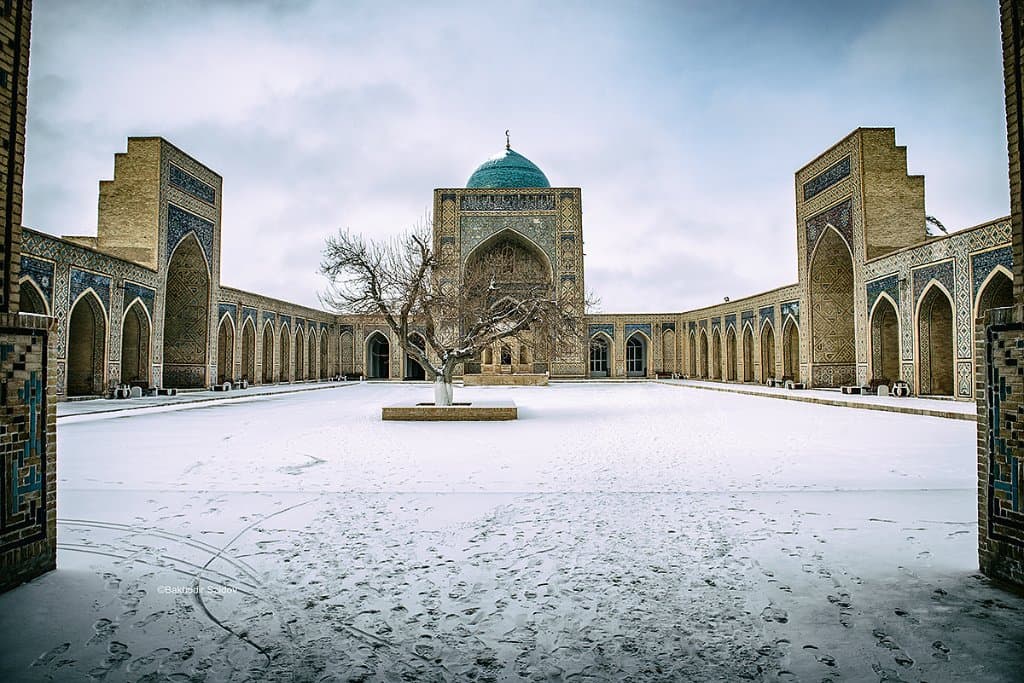
Social
from TikTok, Instagram & Reddit